 W
WageHa is a weekend club event in Tokyo, Japan. It is held on Friday and Saturday at the Usen Studio Coast event space in the Shin-Kiba district, which also hosts live concerts and other events. The word Ageha is Japanese for 'Swallowtail butterfly'. The event's name has also been presented in the 3-letter-version 'AGH' in capital letters, for instance on the official staff shirts. If the three letters are pronounced separately in German, they are pronounced as "ah-geh-ha", similar to the Japanese pronunciation of the club's name.
 W
WAkasaka Blitz (赤坂BLITZ) was a music venue in Minato, Tokyo, which opened in April 1996, and was owned and operated by Tokyo Broadcasting System Television, Inc. On September 22, 2020, the venue was permanently shut down due to COVID-19. As part of a redevelopment plan that involved the demolition of several TBS buildings in the area, it closed from 2003 until its reopening on March 20, 2008. Since the naming rights were acquired by the Mynavi Corporation, the venue has been known as Mynavi Blitz Akasaka (マイナビBLITZ赤坂) since November 2017. Fishmans' final concert was performed here.
 W
WAsakusa International Theater was a 3,860-seat theater located in Asakusa, Taitō, Tokyo, Japan, which was used for concerts and theatrical performances. It opened in 1937 and was closed in 1982. It was demolished and replaced by the Asakusa View Hotel in 1985. It was owned and operated by Shochiku and primarily featured the Shōchiku Shōjo Kagekidan (松竹少女歌劇団), an all-woman musical theatre troupe. The SKD often appeared in a double bill with a film. Other artists that performed at the theater include King Crimson and Whitesnake.
 W
WBlue Note Tokyo is a jazz venue in Aoyama, Tokyo, Japan. It is a branch of Blue Note Jazz Club in New York and located about 400 metres east of the Aoyama Gakuin University. It has been described as Tokyo's best venue for live jazz.
 W
WThe Bunkamura is a concert hall, theater and museum located in Shibuya, Tokyo, Japan, operated by Tokyu Group.
 W
WCasals Hall is a concert hall in Ochanomizu, Tokyo, Japan. It is named in honour of cellist Pau Casals. The hall opened in 1987 as a venue for chamber music and has a shoebox-style auditorium which seats 511. Arata Isozaki was the architect, with acoustic design by Nagata Acoustics. In 1997, for the tenth anniversary celebrations, a 41 stop organ by Jürgen Ahrend was installed.
 W
WGotanda U-Port Hall (ゆうぽうと) was a multi-purpose event venue located in Nishigotanda, Tokyo, Japan. It hosted artists such as Judas Priest, Iron Maiden, Jewel, Stone Temple Pilots, Cheap Trick and Cyndi Lauper. The hall opened in 1982 and closed in 2015.
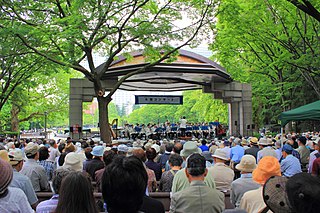 W
WThe Hibiya Open-Air Concert Hall is an outdoor theater in Tokyo, Japan's Hibiya Park. There are actually two concert halls; the smaller was erected during the Meiji era, and the bigger was first built in the Taishō era. The larger venue is colloquially abbreviated to "Yaon" (野音).
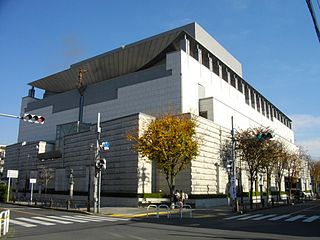 W
WKatsushika Symphony Hills (かつしかシンフォニーヒルズ) also Katsushika Bunka Kaikan (葛飾区文化会館) is a cultural centre in Katsushika, Tokyo, Japan. The Mozart Hall seats 1318 and the Iris Hall has a capacity of 298. AXS Satow were the architects with acoustic design by Nagata Acoustics.
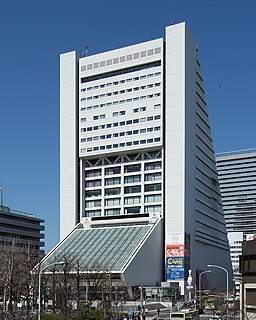 W
WNakano Sunplaza , formerly Nakano Sun Plaza, is a hotel in Nakano, Tokyo. The hotel includes a concert hall, the Nakano Sunplaza Hall. Built in 1973, this concert hall seats 2,222 people. The building is to be demolished and replaced by a new complex including a hotel and a concert hall capable of seating 10,000 people around 2024.
 W
WThe New National Theatre, Tokyo (NNTT) is Japan's first and foremost national centre for the performing arts, including opera, ballet, contemporary dance and drama. It is located in the Shinjuku area of Tokyo. Since 1997 more than 650 productions were staged. There are about 300 performances per season with approximately 200,000 theatergoers. The centre has been praised for its architecture and state-of-the-art modern theatre facilities, which are considered among the best in the world. In 2007, the NNTT was branded with the advertising slogan: Opera Palace, Tokyo.
 W
WThe NHK Hall is a concert hall located at the NHK Broadcasting Center, the main headquarters of Japan's public broadcaster NHK. The hall is the main venue for the NHK Symphony Orchestra, but it has also played host to other events, such as the 1979 Japan Music Awards, and NHK's annual New Year's Eve special Kōhaku Uta Gassen.
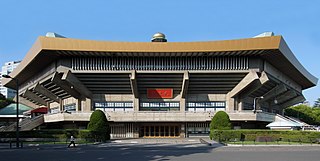 W
WNippon Budokan , often shortened to simply Budokan, is an indoor arena located in Chiyoda, Tokyo, Japan. Originally built for the inaugural Olympic judo competition in the 1964 Summer Olympics, its name translates as Martial Arts Hall in English. While its primary purpose is to host martial arts contests, the arena has gained additional fame as one of the world's most iconic musical performance venues. Budokan was a popular venue for Japanese professional wrestling for a time, and it has hosted numerous other sporting events such as the 1967 Women's Volleyball World Championship. Most recently, the arena hosted the Olympic debut of karate in the 2020 Summer Olympics as well as the judo competition at both the 2020 Summer Olympics and the 2020 Summer Paralympics.
 W
WThe Nippon Seinenkan (日本青年館) is a hotel and convention complex in Shinjuku, Tokyo, Japan. The main hall can accommodate 1,360 guests.
 W
WShibuya O-East (しぶや・オーイースト) is a music venue in Dogenzaka Chome, Shibuya, Tokyo, where every week, mostly Japanese bands and musicians performs. The venue was renamed Spotify O-East in December 2021, after a deal with the music-streaming service. It had previously been named Tsutaya O-East, under the terms of an eight-year deal with Culture Convenience Club.
 W
WShibuya Public Hall is a theatre located in Shibuya, Tokyo, Japan. It was completed in 1964 to host the weightlifting events in the 1964 Summer Olympics.
 W
WShibuya-AX was a concert hall in Shibuya, Tokyo, Japan, near the Yoyogi National Gymnasium.
 W
WThe Sōgakudō Concert Hall (奏楽堂) is a concert hall in Taitō, Tokyo, Japan.
 W
WSumida Triphony Hall is a concert hall in Sumida, Tokyo, Japan. It opened in 1997 and has two auditoria; the main hall, with 1,801 seats; and the small hall, with 252 seats. It is the home of the New Japan Philharmonic. Nikken Sekkei were the architects, with acoustical design by Nagata Acoustics, who tested their concept with a 1:10 model.
 W
WThe Suntory Hall (サントリーホール) is a concert venue in the central Akasaka district of Tokyo, Japan. Part of the Ark Hills complex, it consists of a main concert hall, widely considered one of the finest in the world for its acoustics — indeed Herbert von Karajan called it “a jewel box of sound” — and a smaller side-hall for chamber music. Its roof is an extended, tiered, landscape garden. Construction began in the late 1970s and the facility opened in October 1986.
 W
WThe Tokyo Bunka Kaikan (東京文化会館) is a Japanese concert hall located in Ueno Park, Taitō, Tokyo. Designed by Japanese architect Kunio Maekawa, it was built in 1961 and renovated in 1998–99. Its larger hall seats 2303 people, and its small hall seats 649. It is operated by the Tokyo Metropolitan Foundation for History and Culture.
 W
WTokyo Dome is an indoor stadium in Bunkyo, Tokyo, Japan. Construction on the stadium began on May 16, 1985, and it opened on March 17, 1988. It was built on the site of the Velodrome, adjacent to the predecessor ballpark, Korakuen Stadium. It has a maximum total capacity of 57,000 depending on configuration, with an all-seating configuration of 42,000.
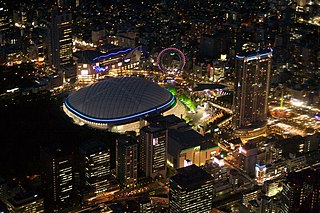 W
WTokyo Dome City Hall is a facility for sport, fashion show, circus, and live music, located in Tokyo, inside of Tokyo Dome City. It is on the opposite corner of the Tokyo Dome, and hosts a variety of events at any given time, including boxing and live concerts. Naming rights of the hall was purchased by Japan Credit Bureau (JCB), a credit card company, so it opened as JCB Hall, from March 19, 2008 to March 30, 2011.
 W
WThe Tokyo International Forum is a multi-purpose exhibition center in Tokyo, Japan. The complex is generally considered to be in the Yūrakuchō business district, being adjacent to Yūrakuchō Station, but it is administratively in the Marunouchi district.
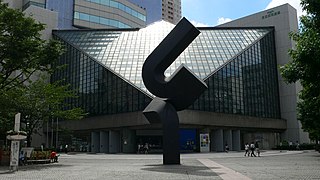 W
WTokyo Metropolitan Theatre is a centre for the performing arts located in Ikebukuro, Toshima, Tokyo, Japan. It opened in 1990 and is operated by Tokyo Metropolitan Foundation for History and Culture. There is a concert hall with 1999 seats and a playhouse with 834 seats as well as a number of smaller spaces. Yoshinobu Ashihara was the architect, with acoustical design by Nagata Acoustics.
 W
WYoyogi National Gymnasium is an indoor arena located at Yoyogi Park in Shibuya, Tokyo, Japan, which is famous for its suspension roof design.